Related Research Articles

The Liberal Party of Australia is a major centre-right political party in Australia, one of the two major parties in Australian politics, along with the centre-left Australian Labor Party. It was founded in 1944 as the successor to the United Australia Party.
The National Party of Australia, also known as The Nationals or The Nats, is an Australian political party. Traditionally representing graziers, farmers, and rural voters generally, it began as the Australian Country Party in 1920 at a federal level. It later adopted the name National Country Party in 1975, before taking its current name in 1982.
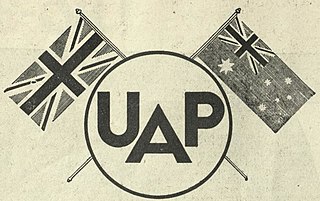
The United Australia Party (UAP) was an Australian political party that was founded in 1931 and dissolved in 1945. The party won four federal elections in that time, usually governing in coalition with the Country Party. It provided two Prime Ministers of Australia – Joseph Lyons (1932–1939) and Robert Menzies (1939–1941).

The Nationalist Party was an Australian political party. It was formed on 17 February 1917 from a merger between the Commonwealth Liberal Party and the National Labor Party, the latter formed by Prime Minister Billy Hughes and his supporters after the 1916 Labor Party split over World War I conscription. The Nationalist Party was in government until electoral defeat in 1929. From that time it was the main opposition to the Labor Party until it merged with pro-Joseph Lyons Labor defectors to form the United Australia Party (UAP) in 1931. The party was a direct ancestor of the Liberal Party of Australia, the main centre-right party in Australia.

The Liberal–National Coalition, commonly known simply as "the Coalition", is an alliance of centre-right political parties that forms one of the two major groupings in Australian federal politics. The two partners in the Coalition are the Liberal Party of Australia and the National Party of Australia. Its main opponent is the Australian Labor Party (ALP); the two forces are often regarded as operating in a two-party system. The Coalition has been in government since the 2013 federal election, most recently being re-elected in the 2019 Australian federal election. The group is led by Scott Morrison as Prime Minister of Australia since August 2018.
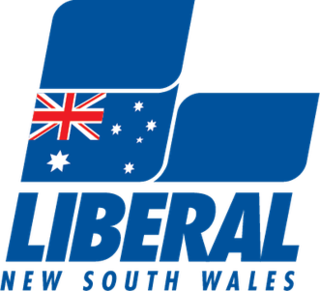
The Liberal Party of Australia , commonly known as the New South Wales Liberals, is the state division of the Liberal Party of Australia in New South Wales. The party currently governs in New South Wales in coalition with the National Party of Australia (NSW). The party is part of the federal Liberal Party which governs nationally in Coalition with the National Party of Australia.

Alexander Mair was an Australian politician who served as Premier of New South Wales from 5 August 1939 to 16 May 1941. Born in Melbourne, Mair worked in various businesses there before moving to Albury, New South Wales where he went on to be a member of the New South Wales Legislative Assembly for fourteen years. In 1932, Mair was elected to the seat of Albury and was re-elected a further four times. He rose quickly through the cabinet of Bertram Stevens' United Australia Party government, becoming an Assistant Minister in April 1938, Minister for Labour and Industry in June and Colonial Treasurer in October.

Sir Percy Claude Spender was an Australian politician, diplomat, and judge. He served in the House of Representatives from 1937 to 1951, including as a cabinet minister under Robert Menzies and Arthur Fadden. He was later Ambassador to the United States (1951–1958) and a member of the International Court of Justice (1958–1967), including as president of the court from 1964 to 1967.
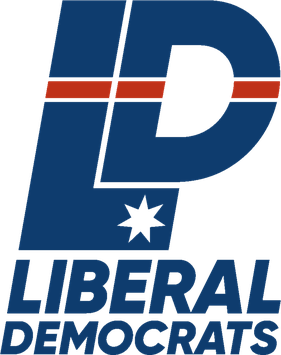
The Liberal Democratic Party is an Australian political party founded in Canberra in 2001. The party espouses smaller government and supports policies that are based on classical liberal, libertarianism principles, such as lower taxes, opposing restrictions on gun ownership, supporting privatising water utilities, increasing the mining and export of uranium and the relaxation of smoking laws. The LDP is a registered party in the Australian Capital Territory, New South Wales, South Australia, Victoria and Western Australia and is also registered for federal elections with the Australian Electoral Commission. As of May 2021, it has two representatives in the Victorian Legislative Council, Tim Quilty and David Limbrick, and elected representatives in some local governments.
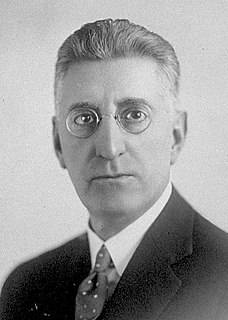
Reginald Walter Darcy Weaver was an Australian conservative parliamentarian who served in the New South Wales Legislative Assembly for 28 years. Serving from 1917 in the backbenches, he entered the cabinet of Thomas Bavin in 1929 as Secretary for Mines and Minister for Forests until he returned to opposition in 1930. Following the success of the United Australia Party in the 1932 election, Weaver returned as the Secretary for Public Works and Minister for Health in the Stevens ministry.

The 1943 Australian federal election was held in Australia on 21 August 1943. All 74 seats in the House of Representatives and 19 of the 36 seats in the Senate were up for election. The incumbent Labor Party, led by Prime Minister John Curtin, defeated the opposition Country–UAP coalition led by Arthur Fadden in a landslide.

Lieutenant Colonel Sir Michael Frederick Bruxner was an Australian politician and soldier, serving for many years as leader of the Country Party in New South Wales. Born in the north of the state, Bruxner was educated at The Armidale School and started studies at University of Sydney but later dropped out to take up employment as a grazier and station agent in Tenterfield. After serving in the Citizen Military Forces from 1911, Bruxner enlisted into the Australian Light Horse upon the outbreak of the First World War in 1914. Serving with distinction in Gallipoli, Egypt and Palestine, he was promoted to lieutenant colonel and awarded the Distinguished Service Order.
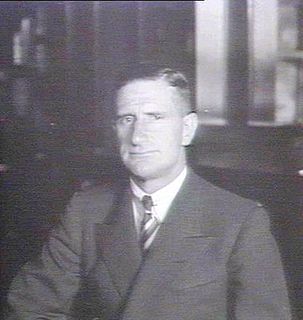
Sir Vernon Haddon Treatt was an Australian lawyer, soldier, Rhodes Scholar and politician. Born in Singleton, New South Wales and educated at Shore School, Treatt interrupted his studies at the University of Sydney to enlist at the outbreak of the First World War. Serving in the Royal Australian Artillery, Treatt served in France and was awarded the Military Medal. Upon returning to Australia he was awarded a Rhodes scholarship and further educated at New College, Oxford.

The 1941 New South Wales state election was held on 10 May 1941. This election was for all of the 90 seats in the 33rd New South Wales Legislative Assembly and was conducted in single-member constituencies with compulsory preferential voting.
The Democratic Party was a short-lived, urban, conservative political party which was active in New South Wales, Australia between November 1943 and 1945. The Democratic Party was formed in November 1943 by the union of the United Australia Party (UAP) in New South Wales and the Commonwealth Party. It was one of the main conservative parties in New South Wales and contested the 1944 state election as a coalition with Country Party.
The Commonwealth Party was a short-lived, urban, conservative political party in New South Wales between May 1943 and January 1944.
Donald Peter Macdonald was an Australian politician and clergyman. He was a member of the New South Wales Legislative Assembly between 1941 and 1947 and an Independent member of parliament.

The 1944 New South Wales state election was held on 27 May 1944. It was conducted in single member constituencies with compulsory preferential voting and was held on boundaries created at a 1940 redistribution. The election was for all of the 90 seats in the Legislative Assembly.
A by-election was held for the New South Wales Legislative Assembly seat of Albury on Saturday 9 November 1946.

The Liberal Party of Australia , branded as Liberal Victoria, and commonly known as the Victorian Liberals, is the state division of the Liberal Party of Australia in Victoria. It was formed in 1949 as the Liberal and Country Party (LCP), and simplified its name to the Liberal Party in 1965.
References
- 1 2 "Liberal Democratic Party dissolved". Newcastle Morning Herald and Miners' Advocate. 16 January 1945. Retrieved 2 December 2019.
- ↑ "New party formed". Sydney Morning Herald 17 April 1943 p11. Australian National Library. Retrieved 11 January 2009.
- ↑ "Split with Mr Cutler". Sydney Morning Herald 25 May 1943 p7. Australian National Library. Retrieved 11 January 2009.
- ↑ "Building a better world". Sydney Morning Herald 20 May 1943 p9. Australian National Library. Retrieved 11 January 2009.
- ↑ "U.A.P. Dissolved - New Body In N.S.W." The West Australian. 9 November 1943. Retrieved 29 November 2019.
- ↑ "Agreement Reached by 3 Non-Labor Parties - C.P. Gives Support, Preserves Identity". The Daily Telegraph. 5 November 1943. Retrieved 29 November 2019.
- ↑ "L.D. Delegates Walked Out". The Herald. 24 November 1943. Retrieved 29 November 2019.
- ↑ ""Democratic Party" Formed". Sydney Morning Herald. 25 November 1943. Retrieved 29 November 2019.
- ↑ "Election prospects: Discord in opposition". Sydney Morning Herald 24 May 1944 p2. Australian National Library. Retrieved 11 January 2009.
- 1 2 "Labor Haters Won't Talk "Unity" With Menzies At Helm". Worker. 4 September 1944. Retrieved 2 December 2019.
- ↑ "Parties will unite". Sydney Morning Herald 26 August 1944 p4. Australian National Library. 26 August 1944. p. 4. Retrieved 11 January 2009.
- ↑ Evan Whitton (1 August 1981). "Did Menzies found the Liberals?". The Sydney Morning Herald. p. 32.